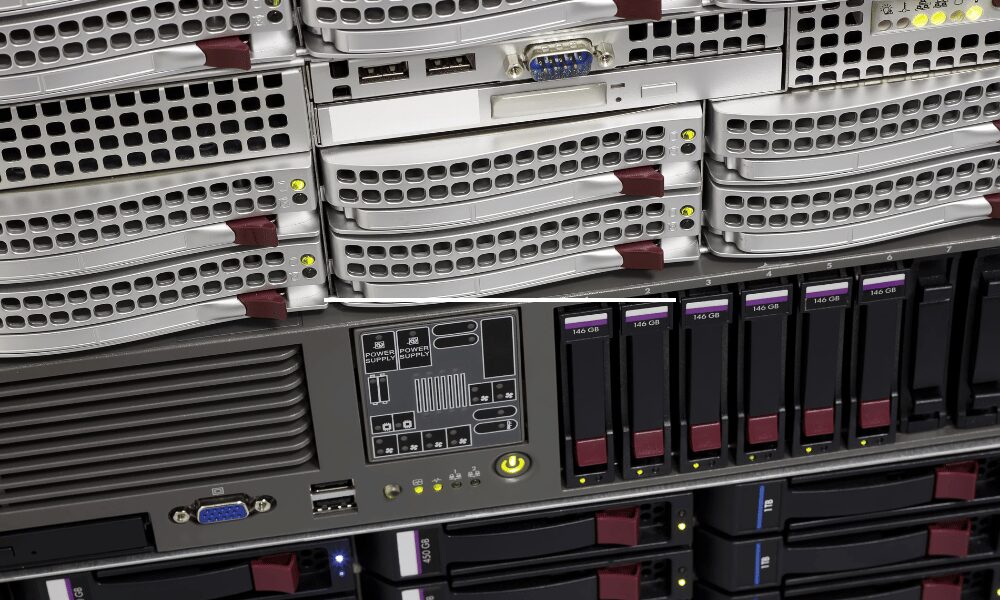In the tech landscape, the phrase “out with the old, in with the new” resonates more than ever. However, the transition from old to new is not merely a matter of choice but a necessity for many organizations.
Legacy systems are like the old, bulky televisions of the tech world: they might still function, but they lack the efficiency, compatibility, and features of modern solutions. These systems can be a combination of outdated software, aged hardware infrastructure, and archaic business processes that are deeply embedded within the organization. The reliance on such systems often poses significant risks, including reduced operational efficiency and increased vulnerability to security breaches. Moreover, legacy systems frequently struggle to integrate with new technologies, which can stifle innovation and growth.
The primary challenge of legacy systems is that they can become a significant barrier to adapting new business practices and technologies. Issues like data security risks, compliance headaches, and inefficient business processes are just the tip of the iceberg. Moreover, these systems often require high maintenance costs and can be unsupported by the vendor, leaving organizations vulnerable to a host of issues. Recognizing these challenges is the first step towards planning a successful migration.
Let’s embark on a journey through the complex but rewarding process of legacy migration, ensuring your business stays competitive and secure in a digital age.
Assessing the Need for Migration
Before jumping into a legacy system migration, it’s vital to evaluate the need for it. Performance issues such as slow processing times and frequent downtimes can severely impact your business efficiency and customer satisfaction. Security risks are also significant; outdated software may not have the latest security updates, leaving your business exposed to data breaches. Compliance concerns arise when old systems no longer meet legal standards, which can lead to hefty fines and damage your company’s reputation.

Planning Phase
A legacy system migration process starts with thorough planning. Identifying stakeholders is crucial as it involves everyone who will be affected by the migration process, ensuring their needs and concerns are addressed. Setting clear goals helps in steering the direction of the migration project and defining what success looks like. Budget allocation is also essential, as it will cover all necessary costs from new software solutions to potential training for staff on new systems.
Selecting Migration Strategies
Choosing the right migration strategy is pivotal and depends on your specific needs and goals. Here’s a brief overview of each strategy:
Rehosting: Often referred to as “lift and shift,” this strategy involves moving an application to a new hardware environment without redesigning the app. It’s typically the fastest and least risky option.
Replatforming: This involves making a few cloud optimizations to reap benefits without changing the core architecture of the application. It offers a middle ground between rehosting and more intensive approaches.
Refactoring: Needed when you want to add new features, scale, or improve performance that the existing platform cannot handle. This usually requires some changes to the code but not a complete overhaul.
Rebuilding: Rebuilding involves redesigning the application from scratch while preserving its scope and specifications. This approach is considered when the existing system is too rigid to modify for the current needs.
Replacing: Implementing a completely new system rather than upgrading the existing one can sometimes be more cost-effective and beneficial. This is usually considered when the existing system is completely out of alignment with current business needs.
Conducting a Risk Assessment
When planning for a legacy system migration, conducting a thorough risk assessment is important. This step ensures that potential pitfalls are identified early on, allowing for the development of effective mitigation strategies. Begin by listing possible risks associated with the migration, such as data loss, security breaches, and business disruptions. Also, consider the technical challenges, like compatibility issues and the potential for exceeding budget or time constraints. Understanding these risks upfront will help you prepare more effectively.
Once risks are identified, develop strategies to mitigate them. This might include setting up robust data backups to prevent data loss, enhancing security measures to protect sensitive data, and creating a detailed project timeline with contingencies to manage delays.
Data Migration Strategies
A significant component of any system migration is the data migration process. Ensuring the integrity and functionality of data post-migration is essential for the continuity of business operations.
Data Cleansing
Before the data transfer, it’s vital to clean it to ensure accuracy and usability in the new system. This involves removing duplicates, correcting errors, and deleting obsolete information. A clean dataset not only eases the migration process but also improves the performance of the new system.
Data Mapping
This step involves defining how data from the old system will be transferred to the new system. It includes determining relationships between data fields and ensuring that the data fits into the new system’s structure. Proper data mapping is critical to prevent data loss and ensure that all necessary data is accurately transferred.
Testing Data Integrity
After data is migrated, conduct thorough testing to ensure it remains intact and functions as expected in the new environment. This includes verifying data completeness, accuracy, and consistency. Testing should be done iteratively during the migration process to address issues as they arise.
Choosing the Right Technologies
Selecting the appropriate technologies is key to a successful migration. The right tools not only simplify the migration process but also help align your new system with business goals.
Cloud Solutions
Cloud platforms offer scalable, flexible, and cost-effective options for hosting your new systems. They facilitate easier updates and maintenance, and provide enhanced disaster recovery capabilities. Cloud migration is particularly beneficial for organizations looking to improve their data accessibility and reduce the overhead costs associated with physical servers.
Automation Tools
Automation can significantly streamline the migration process by reducing manual tasks, thus minimizing errors and speeding up timelines. Tools that automate data migration and testing can ensure a more reliable transfer of data and a smoother transition overall.
Integration Platforms
These platforms help connect disparate systems, allowing for smoother data flow and improved functionality across different business units. Integration platforms are crucial when the new system needs to work in conjunction with other existing systems and applications.
Implementing the Migration Plan
Successfully implementing a legacy system migration plan involves careful management and oversight to ensure minimal disruption and maximal efficiency. Here are some key components of a well-executed implementation:
Phased Approach
Breaking the migration into manageable phases can significantly reduce risk and make the process more digestible for all involved. This approach allows for isolated testing and troubleshooting of each component before moving on to the next, ensuring that issues in one phase can be addressed without affecting the entire system.
Communication Strategies
Keeping all stakeholders informed throughout the migration process is critical. Effective communication ensures that everyone, from the IT team to the end-users, understands the timeline, expected outcomes, and their roles in the process. Regular updates, meetings, and feedback sessions can help maintain transparency and trust.
Monitoring Progress
It’s essential to continuously monitor the migration’s progress against the planned timelines and milestones. Using project management tools and regular status checks can help identify and address delays or issues promptly. This ongoing oversight ensures that the migration stays on track and adjustments are made as necessary.
Addressing Legacy Culture Challenges
Transitioning from a legacy system to a modern solution often requires shifts not just in technology but in organization culture as well. Effective change management strategies are important for dealing with resistance to new processes or technologies. This involves clear communication about the benefits of the migration, addressing concerns proactively, and ensuring that leadership is visibly supportive of the change.
Equipping your staff with the necessary skills and knowledge to operate the new system is important. Comprehensive training programs and continuous learning opportunities can ease the transition, reduce anxiety, and empower employees to make the most of the new system.
Testing and Quality Assurance
Testing is a critical component of any migration plan to ensure the new system functions as intended and meets user needs. Conduct unit testing to check individual components for correct behavior. This is crucial to ensure that each part of the system performs according to specifications before integrating them into the larger system.
After unit testing, perform integration testing to ensure that different components of the system work together seamlessly. This helps identify any issues in the interactions between newly migrated components and existing systems.
User Acceptance Testing is equally vital to confirm that the system meets business requirements and is user-friendly. Involve end-users in this testing phase, as their feedback is important in determining whether the system is ready for full-scale deployment.

Post-Migration Optimization
After successfully migrating to a new system, the focus should shift to optimization to ensure that the system operates at peak efficiency. Performance tuning is essential, as it helps refine system operations based on real-world usage patterns and can significantly enhance speed and reliability.
Alongside technical adjustments, collecting feedback from end-users is crucial. This feedback provides insights into user experiences, highlighting areas that may need further refinement or adjustment. Regularly gathering and acting on this feedback ensures that the system continually evolves to meet user needs effectively.
Ensuring Security and Compliance
Security and compliance are paramount in the new system environment. Implementing robust data encryption protects sensitive information from unauthorized access, helping to maintain confidentiality and integrity of all the data. Additionally, conducting regular compliance audits ensures that the system adheres to relevant laws and regulations, which can vary by industry and region. These audits help identify any compliance gaps and provide a roadmap for addressing them promptly, thus safeguarding the organization against legal and financial penalties.
Documentation and Knowledge Transfer
For the migration to be successful in the long term, thorough documentation and effective knowledge transfer are essential. Documenting processes provides a reference for current and future needs, detailing how the new system operates and how specific tasks are performed. This documentation serves as a vital resource for troubleshooting and training new employees.
Furthermore, organizing knowledge-sharing sessions can facilitate smoother transitions by helping staff understand the new system’s functionalities and best practices, fostering a more informed workforce.
Monitoring and Maintenance
The work doesn’t end once the new system is in place. Continuous monitoring and maintenance are required to ensure the system remains functional and efficient. Setting up ongoing support mechanisms can help address any issues as they arise, minimizing downtime and maintaining productivity. Additionally, adopting a mindset of continuous improvement, where processes and systems are regularly reviewed and enhanced, can drive efficiencies and innovations, ensuring that the system remains aligned with the organization’s evolving needs.
Cost Management
Managing costs effectively is needed after a system migration. Conducting a thorough budget review post-migration helps identify any unexpected expenses or savings and aligns future spending with organizational priorities. Employing cost optimization techniques such as automating processes to reduce manual efforts or renegotiating vendor contracts can help control and reduce operational costs. Effective cost management not only ensures the financial health of the organization but also supports sustainable growth and system scalability.
Summary of Key Considerations
Navigating the complexities of legacy system migration may seem daunting, but with the right strategies and a clear roadmap, success is within reach. By understanding the nuances of your legacy system, planning meticulously, and executing with precision, your organization can achieve a smooth transition to more modern, efficient technologies.
Note that the journey doesn’t end with migration. Continuous optimization, rigorous security practices, and proactive cost management are essential to harness the full potential of your new system. Embrace this transformative journey to keep your business agile and robust in a digitally driven world.



